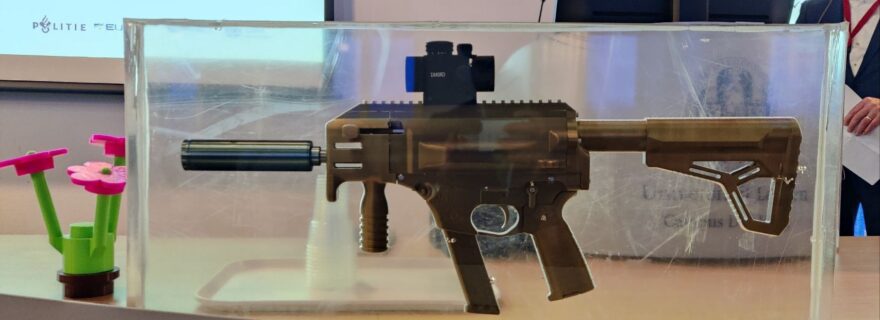Printed Danger? Reflections on the first conference on 3D printed firearms
On May 24th and 25th, more than 120 experts from over the world gathered in The Hague, the Netherlands, to discuss the emergent threat of 3D printed firearms. Organized by Europol, the Dutch National Police in the framework of EMPACT firearms and hosted by Leiden University, the conference was the first of its kind to bring together leading experts from legislation, policing, the 3D printing industry, forensics and academia. During these two days, the current state of the phenomenon, lessons learned from investigations and possibilities for future interventions were discussed during plenary presentations and in small-scale working groups.
3D printed firearms are a type of home-crafted weapon. The term refers mainly to firearms or components of firearms that are (almost) completely made from plastic-polymers, produced with a 3D printer in just a few days. Yet, the assemblance of a 3D printed firearm requires craftsmanship and technical skills, and the very first models – such as the so-called Liberator produced in 2013 – were largely deemed unreliable. More recent models, including the FGC (“Fuck Gun Control”) 9, have proven to be more reliable, as showcased in a number of gun shows in the United States. With this increased reliability and effectiveness, 3D printed firearms are becoming more interesting for criminals. They also value that 3D printed firearms are hard to trace, as they do not contain a serial number or other type of identification mark. Fortunately, there are very few reports of the use of 3D printed firearms used in crime in Europe so far. An example is the terrorist attack in Halle, Germany in 2019, committed with several, partially improvised firearms with 3D printed components. However, these improvised firearms malfunctioned during the attack. Other reports related to 3D printed firearms in Europe are related to seizures of such firearms, for example in Spain, Finland or the Netherlands, rather than their use in violence incidents. Whether 3D printed firearms will be used more often in the future in violent incidents is yet to be seen.
The conference on 3D printed firearms brought together experts from various disciplines. The fruitful discussions and presentations highlight one of the most important outcomes of the conference: the necessity to connect experts and to create opportunities to learn from each other. For example, law enforcement can learn from forensic and ballistic experts what evidence needs to be confiscated during a seizure of home-crafted weapons and 3D printers. On the other hand, industry experts know what intervention strategies can best be implemented with regards to the printing software – this is necessary knowledge for policy makers to identify points for regulation. Furthermore, given the global nature of this phenomenon, intelligence sharing on seizures and incidents involving 3D printed firearms or printed components across European countries and beyond is integral to generate a better understanding of the phenomenon and to coordinate interventions against the illegal use of such weapons.
What lessons can be drawn for gun violence researchers? So far, due to the very limited data available on 3D printed firearms, research on the phenomenon has been either conceptual in nature, focused on the technical aspects, or written from a forensic angle. Except for the terrorist shooting in Halle, little is known about violence committed with 3D printed firearms specifically. Existing literature on other types of firearms, such as converted guns, can be used to understand trends with regards to home-crafted weapons more broadly. Past research can inform our understanding about the trends of home-crafted firearms, their impact, as well as indicate a profile of their users. Some of their findings may then also be applicable to 3D printed firearms. At the same time, gun violence researchers have to advocate for improvements with regards to data gathering and sharing for the purpose of academic research in Europe. The current intelligence picture on the phenomenon of gun violence is lacking disaggregated, comparable information on lethal and non-lethal violence committed with firearms, as indicated in a recent EU-funded report. However, as highlighted during the conference, such information is crucial not only to understand current trends, but also to inform potential future threats of 3D printed firearms.


